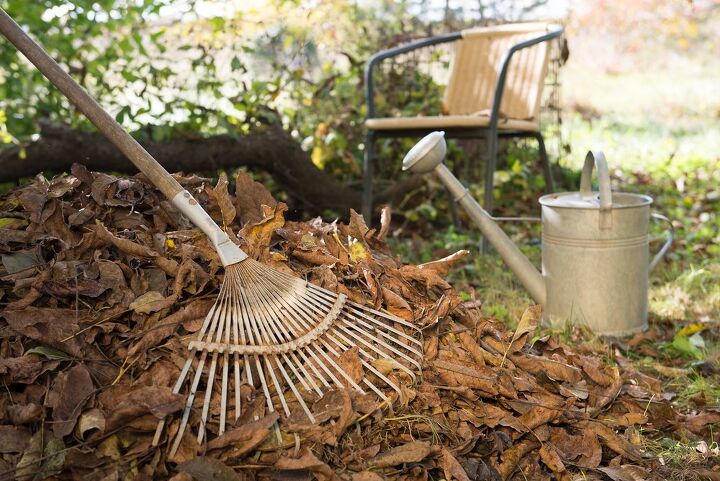When Should You Water Outdoor Plants For The Last Time Of The Year?

Fall weather can be so confusing, especially when it comes to your garden. Some days it may be cold and rainy, and then the next day it may be sunny and warm. So, when should you water outdoor plants for the last time of the year?
You should water outdoor plants for the last time of the year after the first frost in most cases. However, you can keep watering your plants if the temperature becomes warmer again after the first frost. Stop watering your outdoor plants altogether once the temperature consistently stays at 40 degrees or under, so you don’t kill them.
Scatter mulch in your garden beds to prevent soil erosion after you water your plants for the last time of the year. It also helps to prune dead leaves and branches, so your plant’s energy will go to the root system. Follow along as we explore when you should water outdoor plants for the last time of the year.
When Should I Stop Watering My Outdoor Plants In The Fall?
You should stop watering outdoor plants when the ground freezes. Check your local forecast to see when the first frost of the year will hit in your area. Depending on where you live, the first frost of the year may hit in mid-to-late October or early November.
You can damage your plants if you continue to water them after the frost has hit. This will make the ground freeze more severely, and it will kill your outdoor plants. However, you may need to keep watering your plants after the first frost if the temperature immediately increases for a week or two.
For example, you should resume watering your plants if the ground freezes one day, and then the temperature goes back to the 50s or 60s. Otherwise, it’s time to stop watering your outdoor plants when the temperature stays below 40 degrees for several days.
How Do You Take Care Of Outdoor Plans In The Fall?
Carefully Water Them
While you shouldn’t stop watering plants in the fall until it is consistently below 40 degrees, you must be careful. South-facing plants can become dehydrated during fall much quicker than north-facing plants. That is because south-facing plants get much more sunlight, so they can dry out quickly.
Most outdoor plants don’t require quite as much water in the fall as they do during the summer. The soil will retain water for longer than it would during the summer because it isn’t as hot outside. Because of that, you must check the soil to see how quickly it drains so you don’t over-water your outdoor plants.
An easy way to do this is to water your plants, then stick a trowel into the soil after a moment to see how far the water goes down. You can also dig a small hole, fill it with water, and see how long it takes for it to drain. This will tell you how much water it takes to adequately hydrate your plants without over-watering them.
NOTE: It’s also important to only water your outside plants during fall if the soil is dry. You can often get away with skipping days of watering your plants during fall if the soil stays damp.
Apply Mulch
It may seem redundant to add mulch to your garden in late fall, but it’s a great way to protect it. Apply mulch to your garden beds after the first frost of the year. Soil erosion is a huge threat to outdoor plants, and it can easily occur throughout winter.
That is especially true if you live in an area that gets a lot of rain and snow during the fall and winter. Mulch can protect the soil and your plants’ root systems from eroding due to prolonged moisture. Soil takes much longer to dry out when the temperatures are cold throughout the fall and winter.
Mulch can keep excessive moisture at bay and decrease the drainage speed, so it doesn’t all hit the soil and roots at once. The only scenario where you shouldn’t apply mulch in mid-to-late fall is if you have lots of self-seeding plants. That’s because the seeds may struggle to penetrate the mulch in the spring. Otherwise, mulch is a great way to protect your plants, soil, and roots after you water them for the last time of the year.
Trim Your Plants
Your perennials will bounce back in spring after the long fall and winter. However, you must trim them a bit to ensure they’re in great shape to survive the cold weather. Look for weak and dead leaves, branches, stems, and wood.
Remove anything that looks weak, unhealthy, and dead. Don’t be fooled if your perennials look dead throughout the fall and winter. They may be inactive and look dead on top, but the roots beneath should stay healthy if you water them up until the frost and trim dead leaves and branches.
It’s important to prune unhealthy parts of outdoor plants before it gets too cold. The root system needs as much water and energy as possible to survive the fall and winter. Removing dead parts of the plant can ensure your plants' energy goes to the roots so it will bounce back quickly when spring comes around.
Place Leaves In Your Garden Beds
Much like mulch, fallen leaves can protect your soil and plants from erosion. They aren’t quite as effective as mulch, but leaves can act as a barrier to stop the soil from getting soaked when it rains or snows. You can also use the plant material you prune from your perennials and scatter them in garden beds to protect the soil.
Not only does this protect the soil from excessive moisture, but it can also nurture pollination. That’s because pollinators often hibernate in dead and fallen plant matter throughout the fall and winter. Once the temperature increases in the spring, these pollinators will emerge and hopefully help your garden.
Apply Fertilizer For The Last Time
Some homeowners skip this step, but late fall is the perfect time to fertilize your lawn and garden for the last time of the year. Fertilize your lawn one more time in mid-to-late October or early November for the best results. This will keep the soil healthy, so it bounces back quickly in the spring.
The timing ultimately depends on where you live and how quickly it gets cold. For example, some homeowners may need to apply fertilizers in early October if the frost hits early.
Summing It Up
You should water your outdoor plants for the last time of the year once the temperatures stay at 40 degrees or lower. Check your local forecast to see when the ground will freeze for the first time of the year and stop watering plants once it’s consistently cold. Prune dead leaves and weak branches from your plants, so all the energy can go to the roots. This will ensure that the root system stays healthy throughout the cold weather.
Related Guides

Nick Durante is a professional writer with a primary focus on home improvement. When he is not writing about home improvement or taking on projects around the house, he likes to read and create art. He is always looking towards the newest trends in home improvement.
More by Nick Durante













![The 10 Best Table Saws - [2022 Reviews & Buyer's Guide]](https://cdn-fastly.upgradedhome.com/media/2023/07/31/9070645/the-10-best-table-saws-2022-reviews-buyer-s-guide.jpg?size=350x220)













